10 Facts You Didn't Know About Cat Whiskers
Of all the enchanting features of felines, few are as fascinating as the sensory hairs known as whiskers.
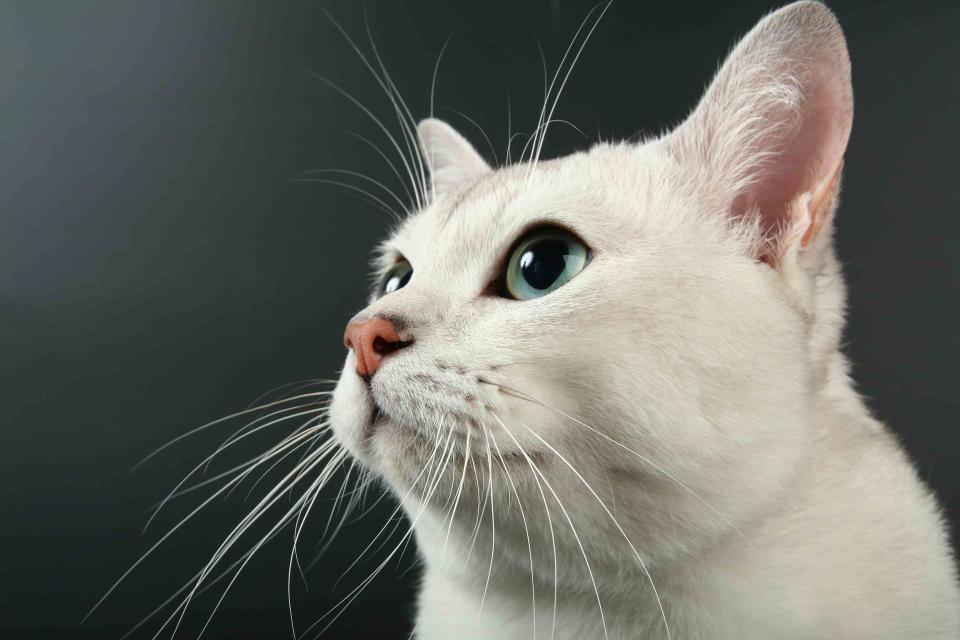
Whether cats are cute because of their whiskers or whiskers are cute because they come on cats, one thing is certain: The two make an irresistibly adorable combination. Some whiskers are exuberant, like the grand mustache of a Victorian gentleman, while others are demure and flirtatious. Whatever form they take, these feline facial bristles are so much more than vestigial accessories; in fact, cats would be hard-pressed to perform many of their formidable feats without them.
Here are some little-known facts about these spectacular, specialized hairs.
1. "Whisker" Is an Old Word
The word “whisker” dates back to around 1600. It was formed from the Middle English word “wisker,” anything that whisks or sweeps, and was originally used to describe a human mustache or beard. Not long after, it also became the word for the antennae-like hair of animals—and why not? Your cat’s facial hair is, by all accounts, like a miniature broom.
2. They Are Thicker Than Hair
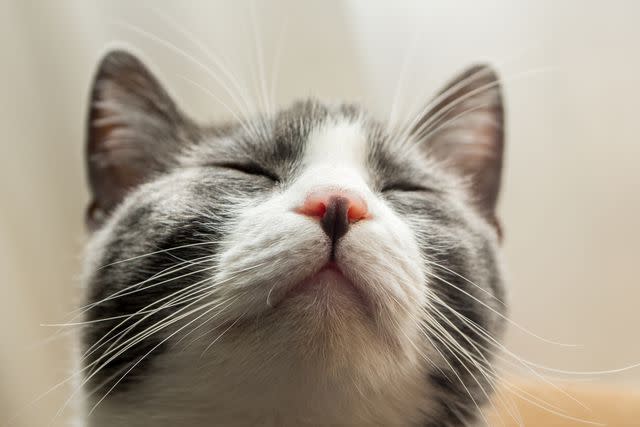
Also called “vibrissae” or tactile hairs, whiskers are two to three times thicker than regular cat hair and have roots three times deeper. Those found on either side of the muzzle are called mystacial whiskers. But whiskers also appear on their jaws, above the eyes, near the ears, and on the back of the forelegs—all places a cat would need to gather information about its surroundings.
3. Cats Have a Set Number of Mystacial Whiskers
Cats typically have 24 mystacial whiskers—12 on each cheek, arranged in four horizontal rows of three. These are the longest of the facial vibrissae, and while some cats can have more than 24, the total number should always be even. It's important that the whiskers are distributed symmetrically on either side of its face so that the cat can get an accurate read of its environment.
4. They Are Sensitive
Unlike human hair, a cat's whiskers are deeply embedded and connected to the nervous system. The tips of these keratin threads are equipped with sensory organs called proprioceptors that send messages to the brain and help the cat determine an object’s distance, direction, and even surface texture. They're akin to a human's sense of smell or vision, and this is why a cat's whiskers should never be cut.
Scientists can study cats' whiskers to learn about things like diet. In one study, researchers analyzed stable isotope ratios in the whiskers in order to identify how much protein was being consumed from either wild or provisioned foods. The findings revealed that among the cats studied, 96% of protein came from pet food, while 4% came from wild prey. "Domestic cats rely almost exclusively on food provided by people, even when they frequently kill wild animals," the researchers concluded. The secrets that whiskers can tell!
5. Cats Can Have Whisker Stress
A cat's whiskers are so sensitive, in fact, that if it's required to use a narrow food or water bowl, the pressure to its tactile hairs can cause what is known as "whisker stress." This kind of fatigue is often a result of the cat's whiskers bumping up against the sides of its dish. If your cat is scooping food out with its paw or knocking food on the floor to eat, consider getting a wider bowl.
6. Whisker Size Corresponds to the Size of the Cat
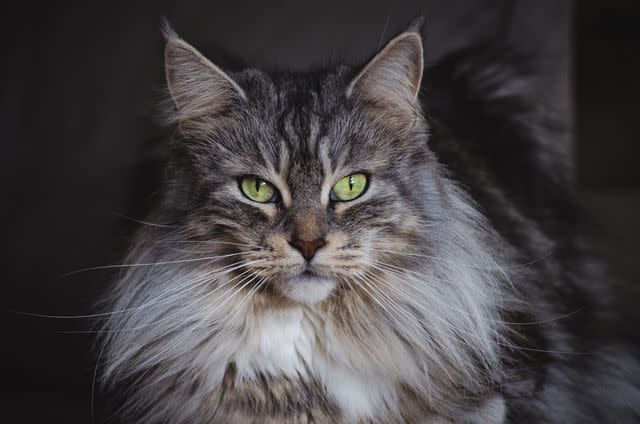
A cat's whiskers are proportionate to the width of its body (hair included); it uses them to know whether or not it can fit through narrow spaces. In general, the chubbier or fluffier a cat is, the longer its whiskers. A Maine coon cat—the largest domesticated cat breed—may have six-inch-long whiskers, whereas the almost hairless Cornish Rex's are typically extremely short and curly.
A Finland-based Maine coon cat named Fullmoon's Miss American Pie (aka "Missi") holds the record for the longest whiskers in the world. In 2005, the Guinness World Records measured them at a whopping seven and a half inches long.
7. Leg Whiskers Help With Hunting
If a cat uses its facial whiskers for sizing up spaces and detecting objects, then what does it use leg whiskers for? The sensory tendrils located at the back of its front legs, on the undersides of its wrists, are called carpal whiskers; they help the cat climb trees and kill prey. When they're holding a mouse, say, in their front paws, those whiskers let the cat know whether its catch is still moving (because they can't see well up close) and whether it's in a position favorable to delivering a fatal bite.
8. Cats Can Move Them
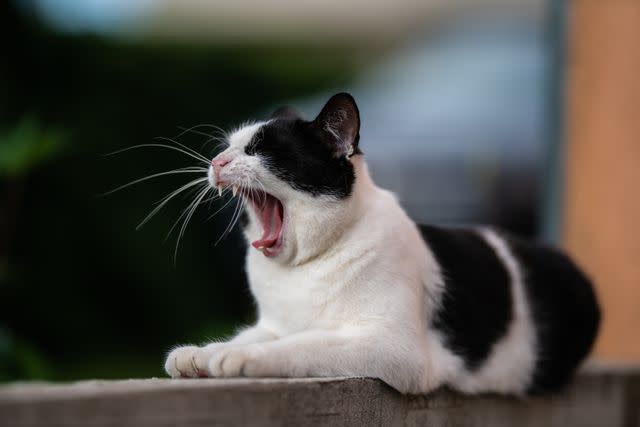
Each mystacial whisker is connected to a muscle "sling," which allows the cat to move them independently. Likewise, large muscles surrounding the whiskers are used to move them all as one. The cat may fan out or direct its whiskers forward when hunting or yawning. They can be pulled back against a cat's cheeks, too.
9. Whiskers Reveal a Cat's Mood
Relaxed and droopy whiskers that point out to the sides of the cat's face indicate a content animal, but a cat whose whiskers are pinned back is likely scared, according to the University of Melbourne. A forward position with ears erect and pointing forward may indicate alertness (as is the case with hunting), while a forward whisker position with ears back is usually a sign of aggression.
10. They Shed
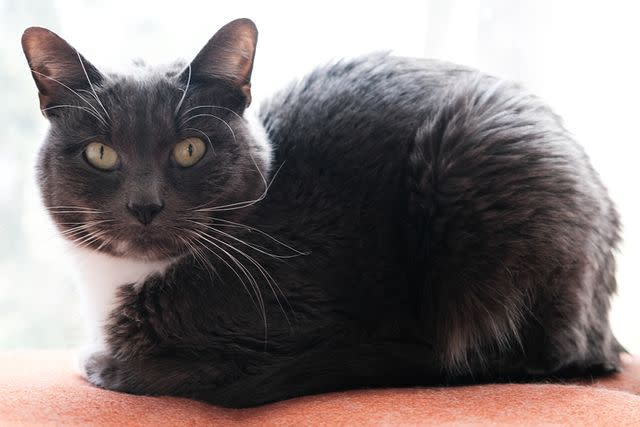
Treehugger / Jordan Provost
Whiskers should never be trimmed, but they do go through natural growth, dormancy, and shedding phases, just like fur. Finding a lost whisker around the house now and again is completely normal—they grow back on their own. If you notice a sudden increase in shed whiskers, however, it could mean your cat is suffering from allergies, an infection, trauma, or cat acne (yes, that's a thing).
At Treehugger, we are advocates of animal welfare, including our pets and other domestic animals. The better we understand our cats, the better we can support and protect their wellbeing. We hope our readers will adopt rescue pets instead of shopping from breeders or pet stores, and will also consider supporting local animal shelters.

